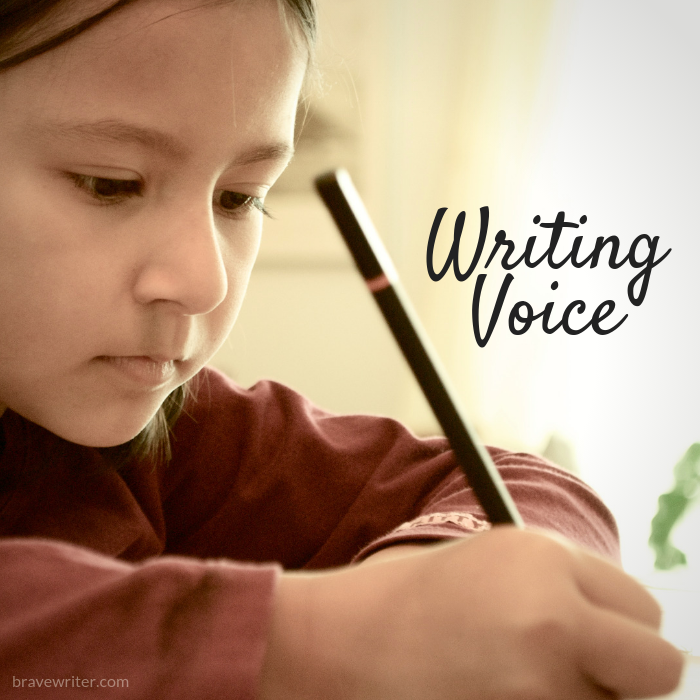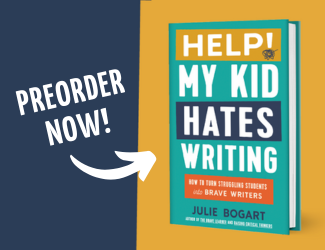Writing Voice: Focusing on the Interior

Kids speak in paragraphs. Paragraphs are not magical formulas. In fact, most programs teach the life out of them and we wind up with cardboard boxes of tedious sentences.
What we want—what we aim for—is LIFE in the writing. Paragraphs are the result of indenting when the mood or content shifts—like learning how to stick shift a car. You don’t stare at the gauges, you get a feel for when it’s time to shift. Paragraphing is similar and it’s not difficult to learn once your children feel free to express their natural vocabulary about a topic. You can always read it to see what’s missing or needs to be moved. Far better than preparing the writing by dictating what sequence the ideas must proceed from the mind to the hand (sure to bottle up or rob the writing of its power).
So—in Brave Writer, we focus on that life in the writer—the interior. We help kids discover how to find the writing voice within. As they age, we introduce “containers” for all that robust self expression—sometimes a lapbook, sometimes a journal entry, sometimes a freewrite, sometimes a report. We allow the content to help dictate the shape.
By high school, kids who are used to self expression and exploring their mind lives in writing are ready to learn about the academic containers for writing—the essay forms and research papers. But remember: these only get used for about eight years of anyone’s life. The rest of life requires all sorts of writing!
Kids who grew up knowing that writing was as available to them as speech generally can meet any writing demand with confidence and competence. Kids raised on formats tend to feel they don’t know what to write when confronted with a new “container” for writing.
So that’s how we do it! Every project in our program is one I’ve done with students or my own kids. This process works beautifully. You can trust it.

Top image by ND Strupler (cc cropped, tinted, text added)

















